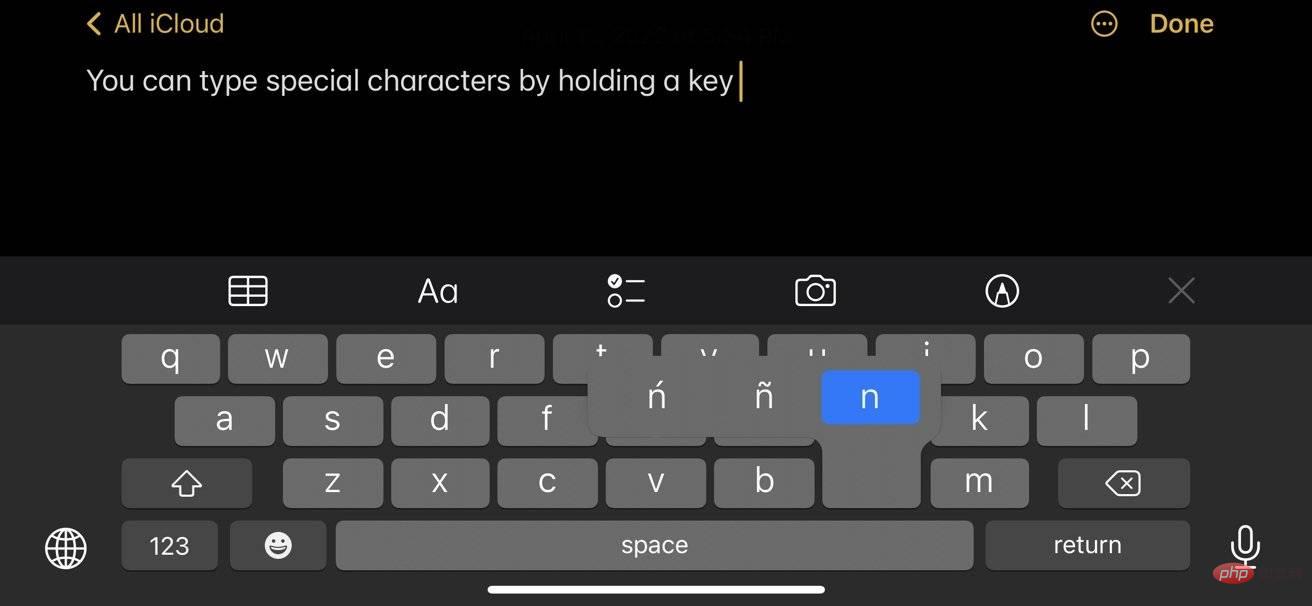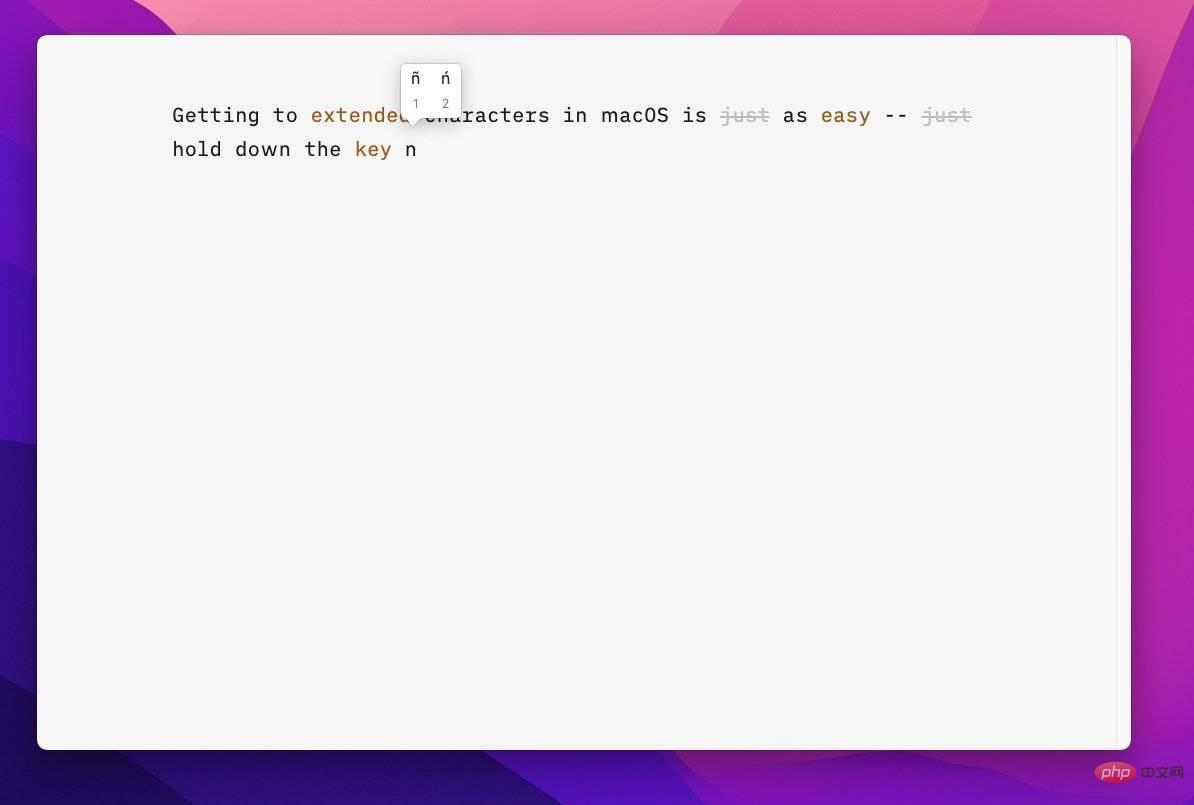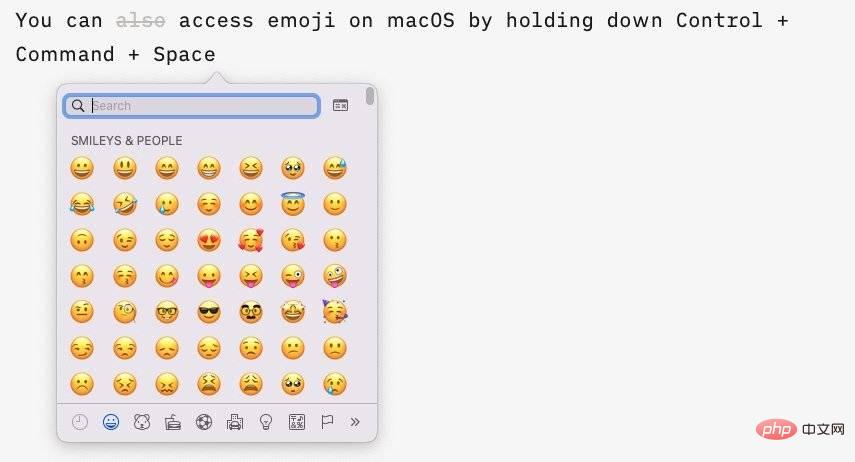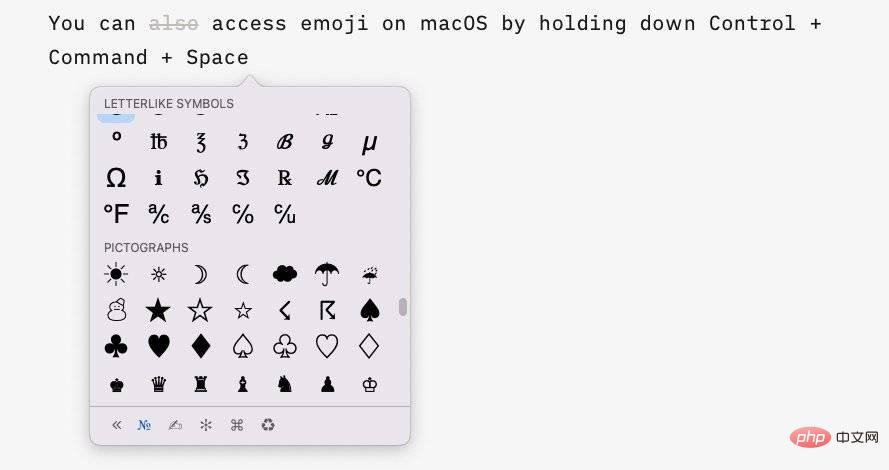
Your physical or numeric keyboard provides a limited number of character options on the surface. However, there are several ways to access accented letters, special characters, and more on iPhone, iPad, and Mac.
The standard iOS keyboard gives you quick access to uppercase and lowercase letters, standard numbers, punctuation, and characters. Of course, there are many other characters. You can choose from letters with diacritics to upside-down question marks.
You may have stumbled upon a hidden special character. If not, here's how to access them on iPhone, iPad, and Mac.
Getting extended characters on your iPhone or iPad is easy.
Not every key has extended characters appended, and different keys have different unique options.
 Extended Characters on iPhone
Extended Characters on iPhoneLetters often have diacritics or accent marks on top of certain letters. They can include diacritics in German or tildes in Spanish.
However, there are definitely some valuable options to be aware of.
Typing on a Mac depends largely on your physical keyboard. Apple laptops will have a built-in keyboard, but desktops can be paired with any language keyboard - including those with special characters.
But if you find yourself needing to type a special character on your Mac, getting them is a similar process.
 Extended Character Viewer on Mac
Extended Character Viewer on MacThere is another type of "special character" on macOS: emoji. Unlike mobile devices like the iPhone and iPad, the Mac has no obvious way to enter emoji characters in a web browser or non-Apple app.
 You can use this keyboard shortcut to enter emoji
You can use this keyboard shortcut to enter emoji However, there is a shortcut to bring up the emoji window. Just press the Control Command Space key and you will see the emoji characters.
Character Viewer is more useful than simply providing text editing applications with easy access to emojis.
You can access other non-emoji special characters by clicking the double arrows to the right of the character viewer. Options include shapes, hieroglyphs, bullets and stars, and technical symbols.
 You can access other symbols and characters in the same menu
You can access other symbols and characters in the same menu You can also quickly type more standard characters on macOS using the appropriate keyboard shortcuts. These are commonly used or interesting.
As an added bonus, you can type the Apple logo on your Mac by holding down Shift Alt K.
The above is the detailed content of How do you enter extended characters, such as the degree symbol, on iPhone and Mac?. For more information, please follow other related articles on the PHP Chinese website!




